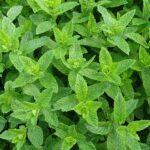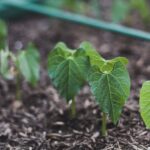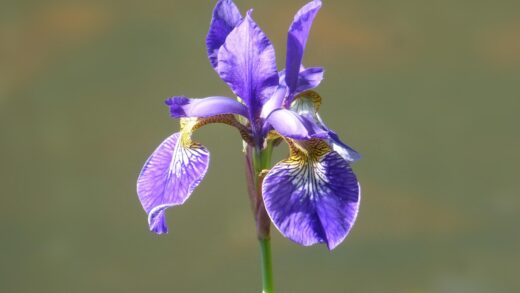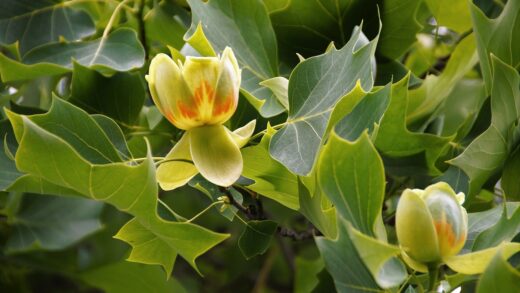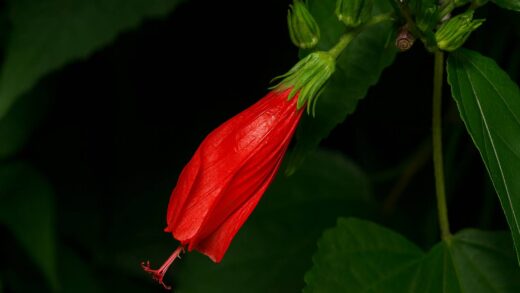Lemon balm, or Melissa officinalis by its scientific name, is a very popular and versatile medicinal and culinary herb whose fresh, lemony scent and aroma enchant almost everyone. Although it is fundamentally a hardy perennial plant that thrives in temperate climates, successful overwintering is crucial for ensuring a bountiful harvest next season and the health of the plant. Proper winter preparation not only guarantees survival but also promotes vigorous and renewed growth after its spring awakening. Understanding and applying overwintering strategies is essential for any garden enthusiast who wants to enjoy the benefits of this wonderful plant in the long term, whether it is grown in the ground or in a pot.
Due to its perennial nature, lemon balm enters a dormant period during the colder months, during which its above-ground parts often die back completely. This process is part of the plant’s natural defense mechanism, concentrating its energy into its rootstock, or rhizomes, located below the frost line. These thickened, nutrient-storing root structures are the key to survival, as new shoots will emerge from them with the onset of spring warmth. Therefore, during overwintering, our main goal is to protect the root system from extreme temperature fluctuations and damage caused by frost. Successful overwintering is not about preserving the foliage but about maintaining the optimal condition of the root zone.
The plant’s preparation for winter is a complex physiological process triggered by decreasing daylight and cooler temperatures. In response to these environmental cues, lemon balm ceases vegetative growth and transports the assimilates produced in the leaves to the root system for storage. This strategy ensures that enough energy is available for the spring restart before the new leaves can perform sufficient photosynthesis. The gardener’s task is to support this natural process with timely interventions, thus helping the plant to survive the hardships of the winter months. Understanding this process is therefore a prerequisite for developing a correct overwintering practice.
It is important to differentiate between overwintering lemon balm grown under different conditions, as an older plant established in the ground requires different care than a younger specimen kept in a pot or balcony box. While garden soil has significant insulating capacity, the root system in a container is much more exposed to environmental effects and the damaging power of frost. Hungary’s continental climate, with the possibility of early autumn frosts and harsh winter freezes, requires special attention to providing adequate protection, especially in the northern, colder, or wind-exposed parts of the garden. Assessing the local microclimate and considering the plant’s location is essential when choosing an overwintering method.
Outdoor overwintering: preparations and methods
The first and one of the most important steps in overwintering lemon balm grown in the ground is the autumn cutback, which should ideally be done after the first serious frosts. When the cold has nipped the leaves and stems, the above-ground parts of the plant begin to dry out and lose their function. At this point, use a sharp pair of pruning shears to cut the plant back to a height of about 5-10 centimeters above the soil surface, resulting in a tidy and clean stand. This intervention is not only important from an aesthetic point of view but also helps to prevent the proliferation of pathogens and pests that overwinter on plant debris and could cause problems in the spring.
More articles on this topic
The key step following the cutback is protection with mulching. The purpose of the mulch layer is not to heat the soil, but to stabilize its temperature, counteracting the harmful effects of sudden freeze-thaw cycles and protecting the root zone from deep freezing. Straw, fallen leaves, bark, wood chips, or even semi-mature compost are excellent for this purpose, and should be spread in a layer about 10-15 centimeters thick around the base of the plant. This insulating layer also helps to retain soil moisture while protecting the roots from winter desiccation and soil movement caused by frost.
The success of overwintering is greatly influenced by the choice of the original planting site for the lemon balm and the quality of the soil. Although lemon balm prefers a moister medium during the growing season, it tolerates waterlogged conditions very poorly in winter. In overly wet, compacted soil, the roots can easily rot, leading to the certain death of the plant. Therefore, well-draining, loose-structured soil is essential for successful overwintering. If your garden soil is clayey and heavy, it is advisable to plant lemon balm in a raised bed or on a gentle slope where excess water can drain away more easily.
In particularly harsh winters or in exposed, windy locations, additional protective measures may be necessary beyond mulching. In such cases, it may be worthwhile to cover the cut-back and mulched plant with a layer of pine boughs, which further moderates the effect of the cold and prevents wind from blowing away lighter mulch materials. Another effective method is to create a low frame from bent wires around the base of the plant and cover it with horticultural fleece, which functions as a kind of mini-greenhouse. A thick blanket of snow is also excellent natural insulation, so if possible, shovel snow onto the base of the plant to enhance protection.
Overwintering potted lemon balm
Overwintering lemon balm grown in a container is more challenging than for plants in the ground, as the root system is much more vulnerable to the cold. While the deeper layers of garden soil provide a relatively stable temperature, the soil in a pot can freeze solid, leading to permanent damage to the roots and the death of the plant. The wall of the container does not provide sufficient insulation against winter frosts, so active intervention is definitely needed for potted plants to overwinter successfully. The choice of the appropriate method depends on the available space and the desired goal.
More articles on this topic
One possible and very popular method is to overwinter potted lemon balm indoors, which can also extend the harvest season. To do this, bring the plant into a bright but cool room before the first frosts, such as an unheated porch, a window in a frost-free garage, or a staircase, where the temperature is between 5-10 degrees Celsius. In this environment, the plant’s growth slows down but does not stop completely, so you can occasionally harvest fresh leaves from it. During overwintering, watering must be drastically reduced; it should only receive enough water to prevent the soil from drying out completely.
If there is no possibility of placing the plant indoors, potted lemon balm can also be overwintered in a dormant state outdoors with proper protection. For this, choose a sheltered, protected corner in the garden, for example, against a house wall or a dense hedge. Place the pot on the ground and surround it thickly with insulating material, such as straw, leaves, or bubble wrap, or you can wrap the pot itself in burlap. An even more effective solution is “heeling in,” where the pot is sunk to its rim in the garden soil, so the natural insulation of the soil protects the roots. If you have several pots, it is a good idea to place them close together and cover the group as a whole.
When preparing for overwintering, regardless of the chosen method, it is important to check the condition of the plant. Gradually reduce watering during the autumn to allow the plant to prepare for its dormant period. Before moving the plant to its winter location, inspect it thoroughly and remove any dried or diseased-looking parts. It is advisable to cut back the above-ground parts, similar to plants in the ground, to reduce evaporation and prevent the development of fungal diseases in the cool, humid environment. This careful preparation greatly contributes to a successful revival in the spring.
Spring tasks and post-winter regeneration
As winter ends, and the temperature consistently stays above freezing and the ground thaws, the time comes to remove the winter protection. This process should be done gradually to avoid stressing the plant with a sudden change in environment. First, remove the top, coarser layer of cover, such as pine boughs, and then, a few days later on a cloudy day, rake away the mulch layer from around the base of the plant. Uncovering it too early can be dangerous, as early spring frosts can still damage the newly emerging, tender shoots, so be patient and watch the weather forecast.
After removing the winter cover, take the time to assess the plant’s condition and tidy up its surroundings. With a sharp pair of scissors or pruning shears, cut off all dead, frost-damaged, or diseased-looking plant parts down to the healthy, living tissue. This spring cleanup pruning is not only aesthetically important but also stimulates new shoot growth and improves air circulation within the plant, thereby reducing the risk of fungal infections. Gently loosen the soil around the base of the plant with a hand cultivator, being careful not to damage the near-surface roots.
When the lemon balm is clearly showing signs of life and the new shoots reach a few centimeters in height, you can begin to supply nutrients to support vigorous growth. A thin layer of mature compost or organic manure spread around the base of the plant provides an excellent start, supplying slow-release nutrients at the beginning of the season. At the same time, begin watering again, depending on the soil moisture, ensuring that the soil is moist but not waterlogged. Regular watering is essential for the development of lush, aromatic foliage.
Early spring is the ideal time to rejuvenate and propagate overgrown, aging lemon balm clumps by division. If the center of the clump has become bare or its growth seems to be weakening, carefully lift the entire root ball out of the ground with a spade. Then, with a sharp spade or knife, cut it into several smaller pieces, ensuring that each piece has enough root system and a few shoot buds. Plant the resulting new plants in their final location, water them thoroughly, and your garden will soon be enriched with new, vigorous lemon balm bushes.










